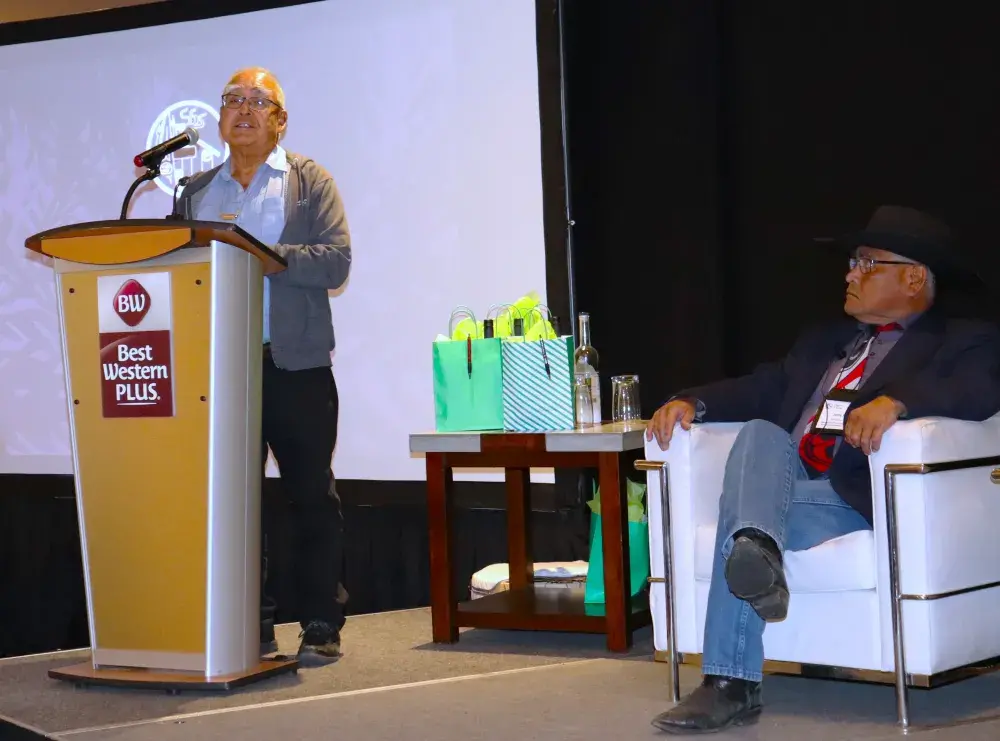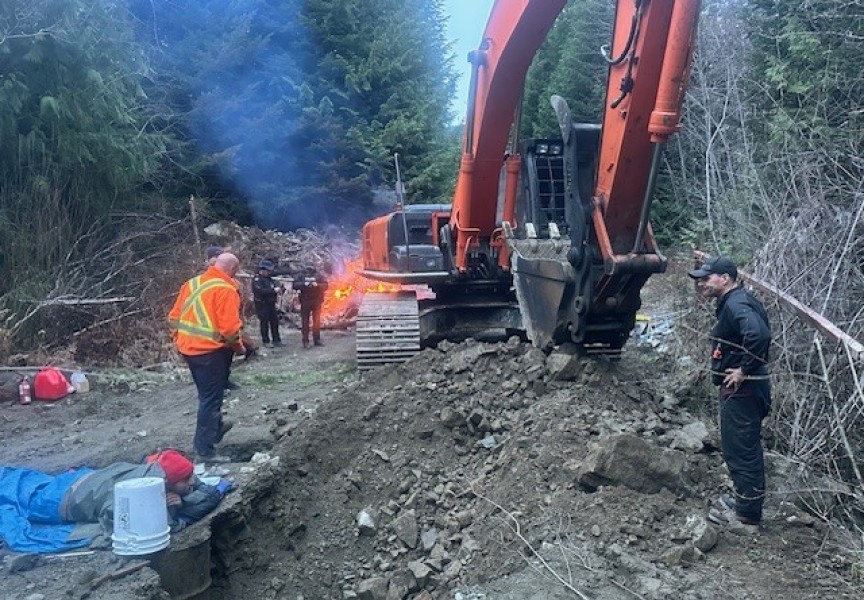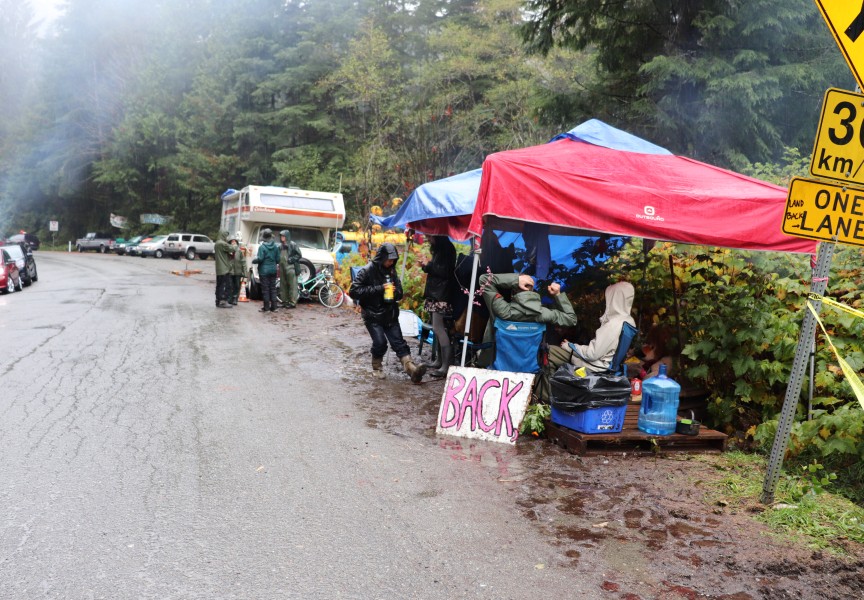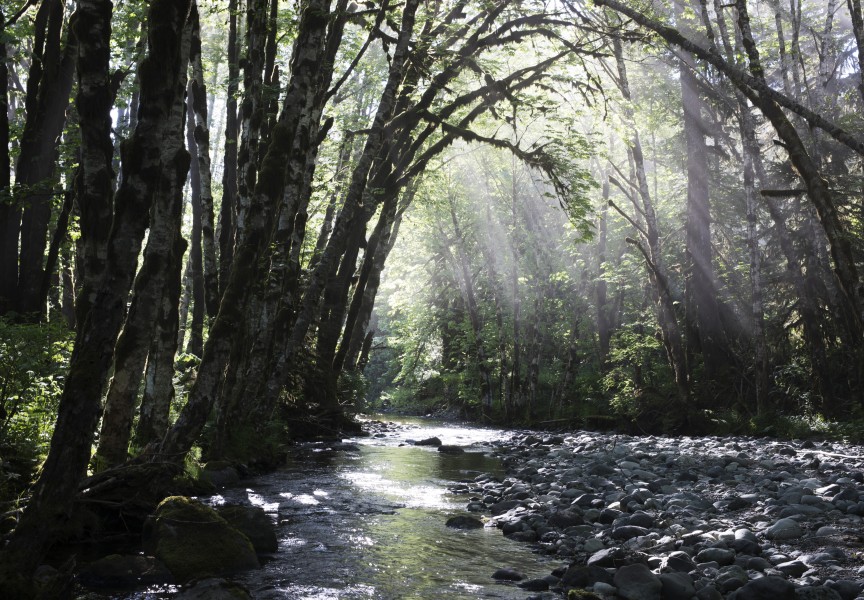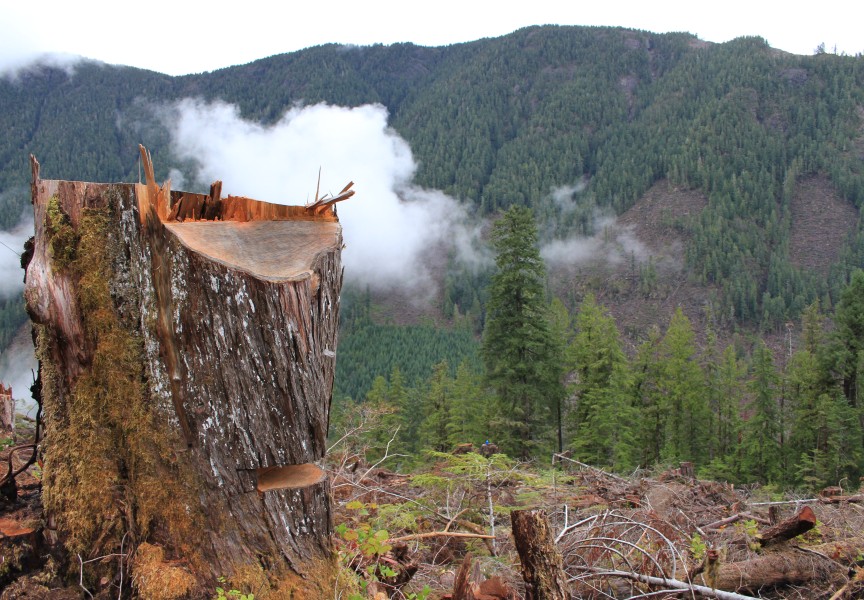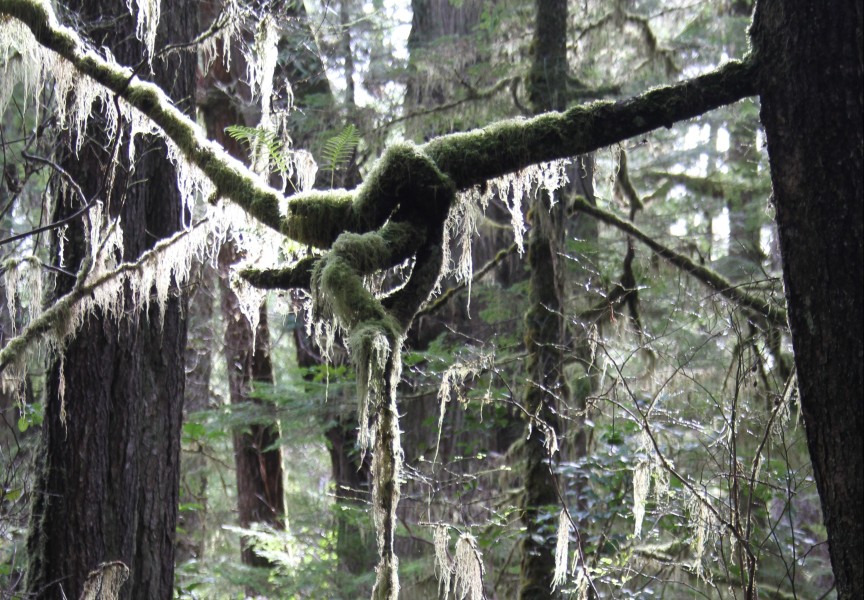The Best Western Barclay Convention centre was packed with Indigenous leaders and foresters who were there to share ideas, resources, and successes as they move forward in a new era of sustainable, First Nations-led forestry practices in their territories.
Sponsored by Indigenous Forestry, the First Annual Indigenous Forestry Conference brought together First Nations leaders, policy makers and industry experts to allow an opportunity to network, strategize and gain insights into traditional Indigenous knowledge.
“We underscore the crucial role of collaboration and respect for Indigenous rights and territories in achieving ecological sustainability and unlocking economic opportunities for Indigenous communities,” according to Indigenousforestry.ca.
As more and more First Nations break new ground as they enter the forestry industry, they discover there are challenges along the way. The Indigenous Forestry Conference gives them a space to share information, strategies and solutions that can empower them as they move toward sustainable forestry practices in their respective territories.
There were several panel discussions throughout the two-day conference which started on the morning of September 10.
One of the panel discussions brought hereditary chiefs together to talk about the roles of hereditary stewards of natural resources. According to Emchayiik, Robert Dennise Sr., Huu-ay-aht, chair of Iskum Investments, the Ancestral Wisdom panel discussion will help people learn about Nuu-chah-nulth history, governance, and the roles and responsibilities of hereditary leaders.
Wickaninnish, Clifford Atleo Sr., elder from Ahousaht was called in as an expert on the subject and served as moderator for the discussion.
“I admit, I am not a fan of the democratic system,” he shared. “I know a little of how it was before through knowledge shared by my father.”
Atleo said his father stressed to his son two very important teachings. One was about hereditary chiefs. “Hang onto the hereditary system because it is not a manmade system. It came to us from the Creator to take care of the resources and the people,” he was told.
The second teaching had to do with language. “Hang onto language because that’s our identity as a people,” Atleo was told.
“Teachings from our elders are based on respect and caring for one another, loving one another and sharing with each other,” Atleo told the crowd.
Atleo showed an illustration that depicts Nuu-chah-nulth-style hereditary governance. The poster shows hereditary chiefs seated in a line at the head or top of the house. On one side are their advisors, very knowledgeable people, according to Atleo.
Seated on the other side of the room or house are the warriors, the wit wok. According to Atleo, they are the keepers of laws.
“Every nation was independent. Some were trained from birth, taught how to care for the resources,” he shared.
“It is important to know where we come from as a people and understanding the concept of hishukish tsawok (everything is one or interconnected) – what we do upriver impacts down river,” said Atleo.
Alteo recalled the fight for Clayoquot Sound against industrial logging and the provincial government in the 1990s. “There’s a reason that there’s CMTs (Culturally Modified Trees) there,” said Atleo, alluding to forest management practices of Nuu-chah-nulth ancestors, which left forest looking like intact, old-growth forests, even though they were continually harvested over generations.
“There were a lot of trees and salmon because we knew how to manage,” said Atleo.
According to Atleo, Ha’wiih of the Clayoquot Sound region argued with the government of BC, stating that they were concerned for the next seven generations and for the future of forests if industrial logging continued in an unsustainable way.
“The government accepted the recommendations (of the Clayoquot Sound Scientific Panel for sustainable forest practices, which included Nuu-chah-nulth elder panelists), but only for Clayoquot Sound,” Atleo stated.
Laxel’wuts’aat, Shana Thomas, Chief of Lyackson First Nation, on the east side of Vancouver Island, said her people are facing a different situation in their territory, saying there is not a lot of collaboration with government.
In 2003 the provincial government enacted the Private Managed Forest Lands Act. According to Thomas, this act failed to uphold constitutionally protected Aboriginal Rights and Title on private land and led to rapid deforestation and loss of culturally significant sites and resources. Under this act, First Nations were excluded from decision making in a large portion of their territorial areas.
Because their lands are not subject to a treaty, government must abide by preexisting Aboriginal governance and rights within their territories under Sec.35 of the Canadian Constitution, according to information shared by Thomas.
The Lyackson First Nation is developing a set of forestry management standards that protects their interests “with the goal of avoiding ecological stress and promoting sustainable growth and prosperity.”
“Our ancestors were foresters,” said Homiskwanis, Don Svanvik, Namgis First Nation Hereditary Chief. Trees were used for everything from canoes and housing materials to clothing and baskets. “We found a CMT (culturally modified tree) in our territory that showed that its bark had been harvested seven times,” said Homiskwanis.
He went on to say that some trees were left standing so that bark or house planks could occasionally be harvested, and some places were cleared of trees to encourage berry bush growth. “Our forests were managed by chiefs that were trained from an early age about their roles and responsibilities,” he told the crowd.
“If we’re going to leave something for seven generations to come, we need to do it better, in a way that respects the rivers, the animals, the fish and the hillsides,” said Homiskwanis.
Klakwagiila, Jerry Jack Jr. Mowachaht/Muchalaht First Nation Ha’wilth, recalled how his aunts and uncles taught him his roles and responsibilities he would have when he took over his father’s Ha’wilth seat. “We are the true owners of everything. What swims under, what flies over, all are part of hupakwanim (all that a Ha’wilth owns/is responsible for). There would be no Species at Risk Act if we had proper (modern-day) stewards of our land,” he pointed out.
“We have to wrestle with these two systems,” said Robert Dennis. He said there was a time when his great grandparents would need a log or some cedar bark. When that happened, they just went out and got it. It became a crime to do that, and First Nations spent millions of dollars in Canadian courtrooms proving their Aboriginal Rights and Title.
The First Annual Indigenous Forestry Conference continued the following day, with presentations from Nuu-chah-nulth leaders that have entered into forestry management.

